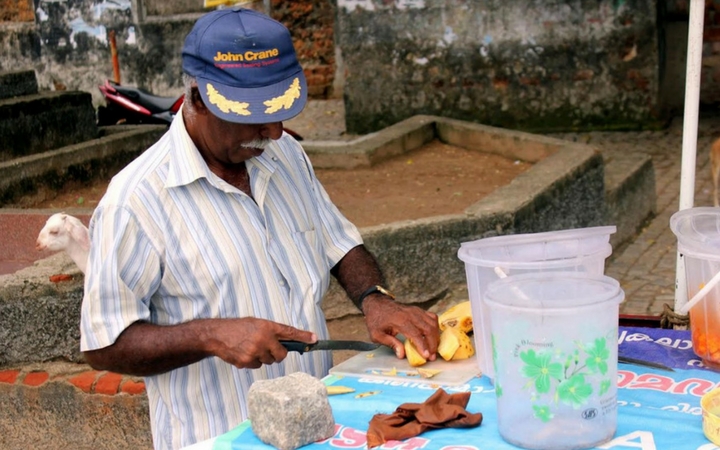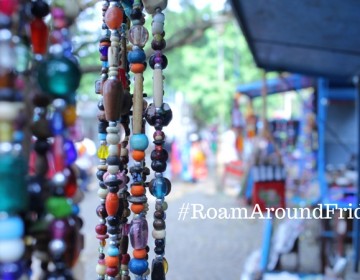The Invisible People
- 16 Aug 2017
- Sunaya
- Features
Who are the invisible people of Kochi, and what do they do for a living?
As I walked along the streets of Fort Kochi, I had one goal in mind: find the people with the disappearing jobs, the invisible jobs. But who were they? And were their jobs really in danger of disappearing altogether? This is what I had to find out.
First stop was the coconut seller. That is a sight beloved to every Malayali. Fresh coconuts and Kerala are two things that should always go together. But who was selling these coconuts? I spoke with one man who had worked for five years selling coconuts. He said “There has been less demand over the years,” and with the monsoon, there will be even fewer customers. But is it still a viable living? He said it was, but he also had an alternate source of income, a small store.
Brightly colored fancy umbrellas displayed in lines, this store was obviously a favorite among children. Cat ears stuck up from some umbrellas, and different fun designs were a sure way to grab a youngster’s attention. But how long did that last? “Summer season is good, but August is bad. No tourists ” said the umbrella seller.
Anil Jaiswar was sitting surrounded by Jute bags as I approached his stall. He came from North India and got his bags from Calcutta, then sold them here. “October onwards is good. The rainy season is bad,” he said. But he didn’t seem perturbed by the lack of customers in this season. I soon found that his bright outlook was fairly common among the people selling their goods here. Some seasons are bad, some are good, but they always get by.
A tiny ice cream shop attached to a bicycle sat on the side of the path as I walked along the ocean. Shyam talked away happily about his shop, saying he had been there for the past ten years. “It is stable with so many tourists, it is always dependable,” he said. “During Ramadan, it is very slow, but even when sales are low, it is okay,” he added.
An elderly man walked along the side of the road carrying the tools of his trade: some rope and a long stick. He was part of a dying profession; that of the coconut tree climber. I asked him how things had changed over the years, and he smiled, saying he had been doing this job for the past 38 years. “Demand has increased. There is a lot of demand now. But I can’t climb like before. I’m getting old, but the demand is huge,” said Thankappan. The new generation, even the children of Thankappan, were looking for more profitable professions. So who would do this job after Thankappan? That was a mystery.
Robbert had a tiny stall on the side of the road that I almost missed. He had been working as a cobbler for 30 years but didn’t seem optimistic about the future of his job. “Kochi corporation people come and make me move from place to place. That is hard,” he said. But even when he moved, people still found him. “I do have repeat customers, people know me,” he said. He had two children, but neither of them would be following in his footsteps as a cobbler. With his wife working as a maid, he was able to make enough to send his children to school. But only barely.
It's hard to see these individuals and these jobs getting unnoticed and extinct slowly. Is it because the world is constantly evolving and machines are replacing man? No one knows, let’s hope that a day won’t come when machines will be finding out stories like these and reporting by themselves.
Text: Jasmine Fern Images: Sreya Babu

















